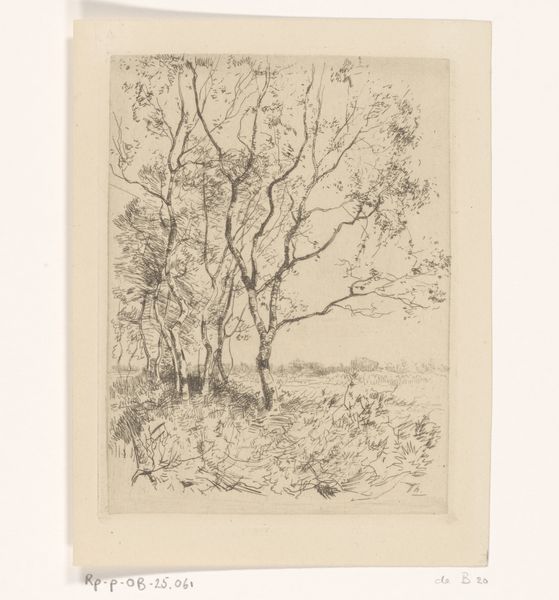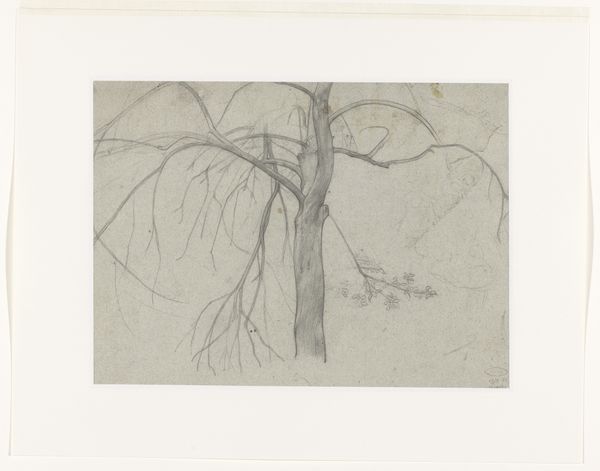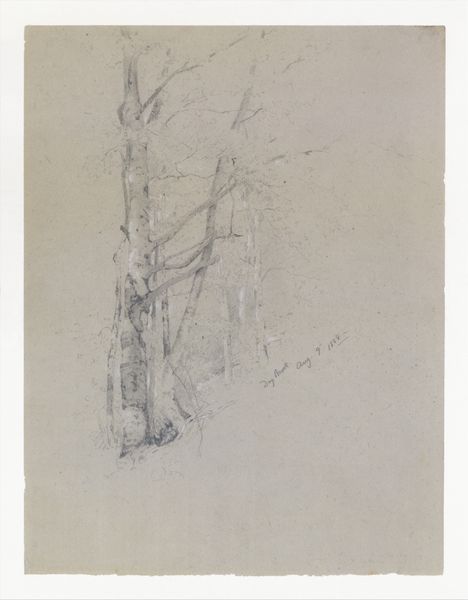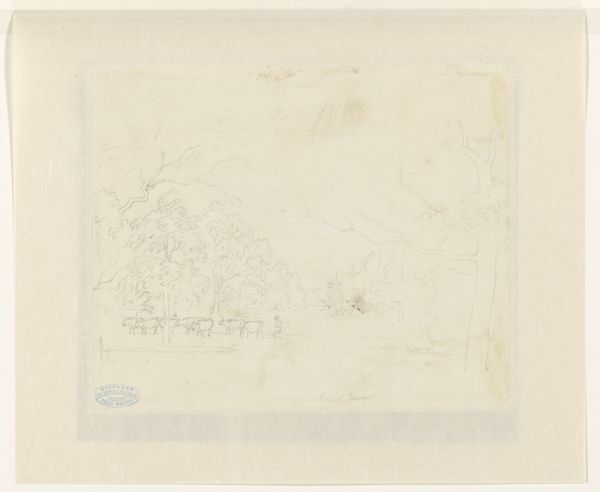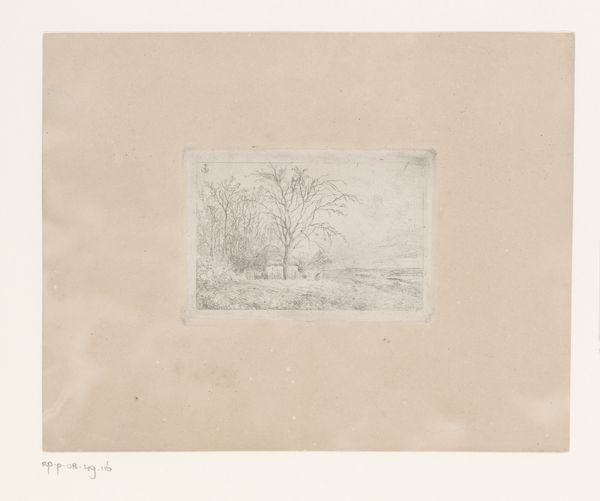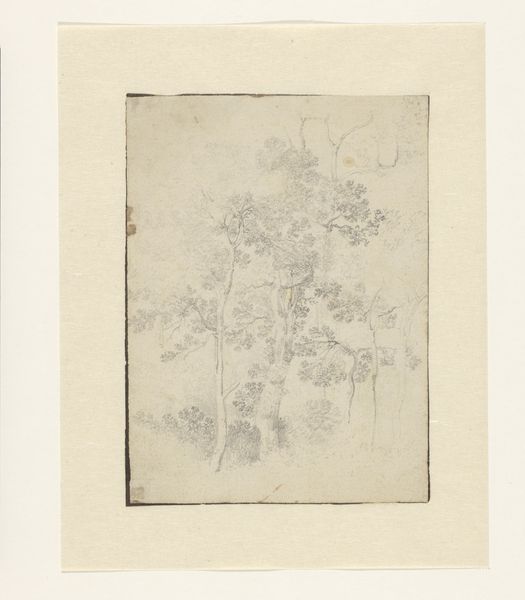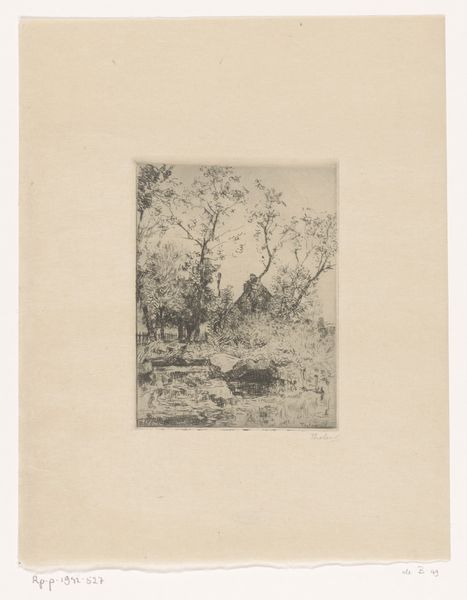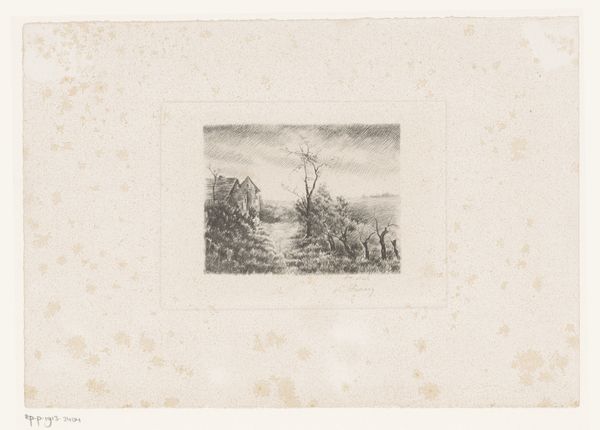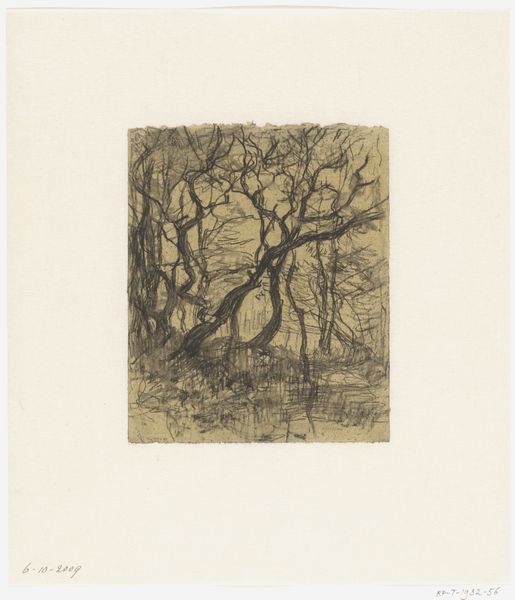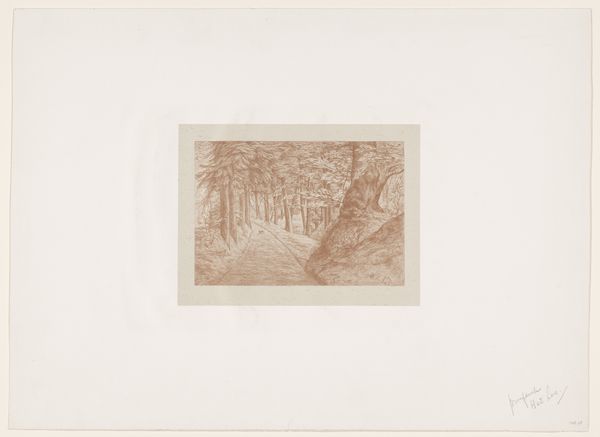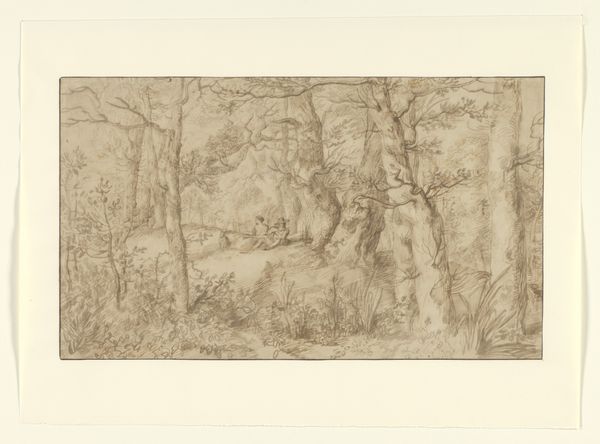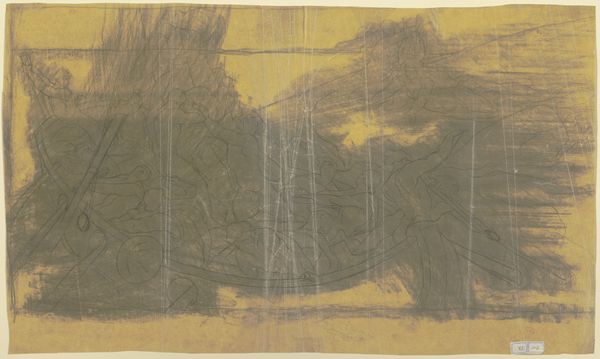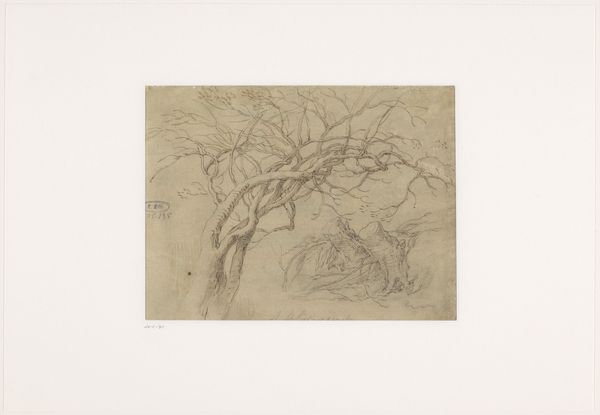
drawing, paper, pencil
#
drawing
#
pencil sketch
#
landscape
#
paper
#
pencil
#
realism
Dimensions: height 272 mm, width 319 mm
Copyright: Rijks Museum: Open Domain
Editor: So, here we have Egbert Rubertus Derk Schaap’s “Schets van bomen,” which translates to “Sketch of Trees,” dating from sometime between 1872 and 1939. It's a pencil drawing on paper. The lightness of the sketch gives it an ethereal, almost transient feel. What's your take on it? Curator: This "Sketch of Trees," compels us to examine the physical realities of its creation. Note the pencil: what type? How was it manufactured? Where did the graphite originate, and what were the labor conditions involved in its extraction and processing? Then there's the paper: is it handmade, machine-made? From what source—rags, wood pulp? These aren't merely aesthetic concerns; they speak to the entire system of production and consumption within which Schaap's work exists. Editor: That’s a really interesting point of view, it’s not something I usually consider. I'm usually focused on composition or… emotional impact. Curator: Consider how the availability and cost of these materials shaped Schaap’s artistic choices. Could he afford finer paper? Was the pencil a readily available tool, or a luxury? And how did the rise of industrial paper production influence artists’ practices at the time? Editor: So you're suggesting we see the sketch not just as an isolated artistic expression, but as a product of its material conditions and historical moment? Curator: Precisely. This artwork provides insights into the social and economic structures of art production. How does it relate to contemporary notions of sustainability and ethical sourcing, considering that the materials that comprised it are the products of industries in potentially exploitative systems of production and supply. Editor: Wow, I'll definitely be thinking about art, and well, pretty much everything else, a little differently from now on. It gives a whole new appreciation. Curator: Indeed, it demonstrates the power of material analysis to deepen our engagement with art and with the world around us.
Comments
No comments
Be the first to comment and join the conversation on the ultimate creative platform.
